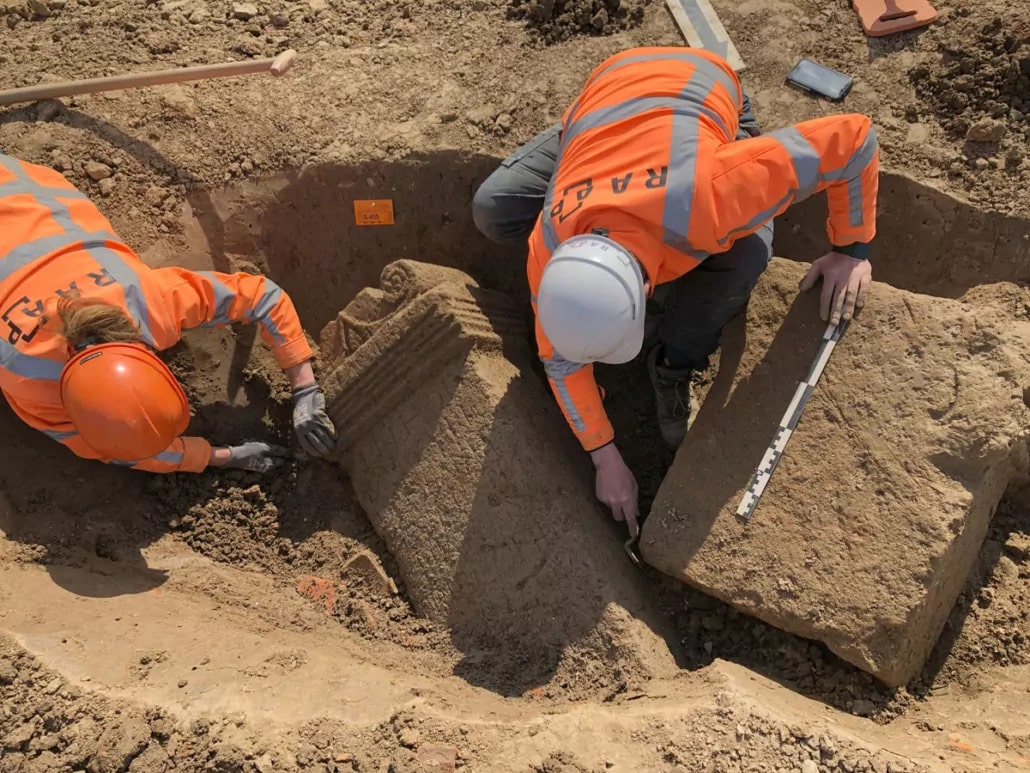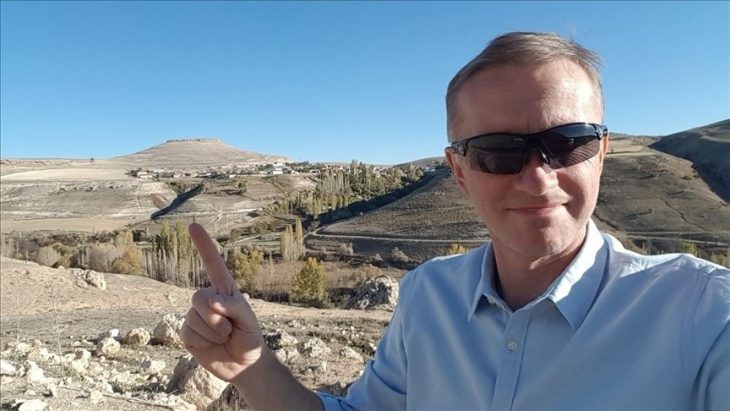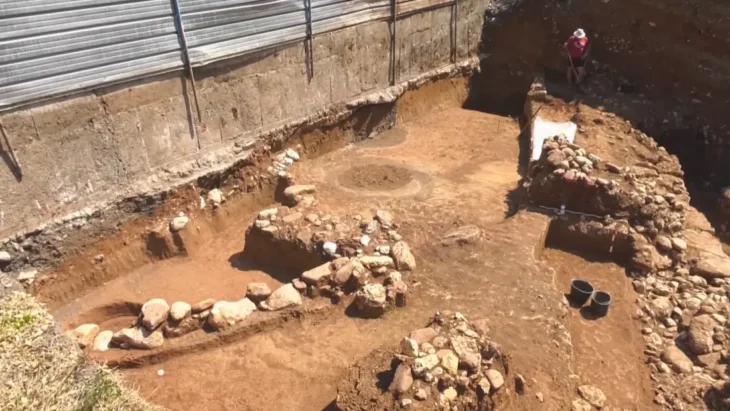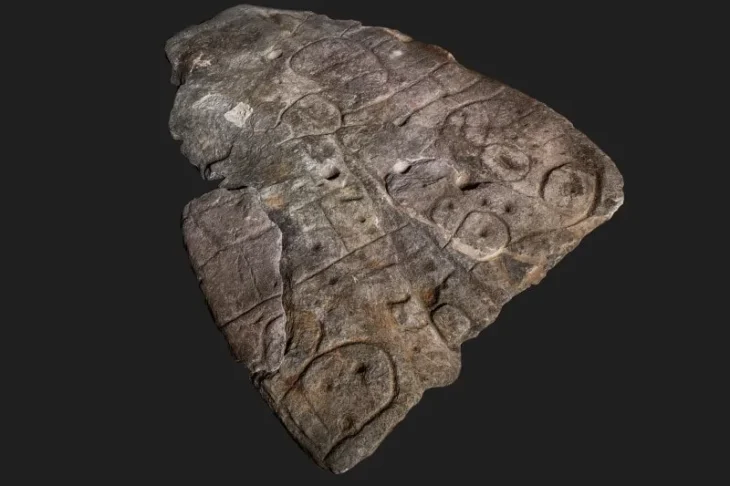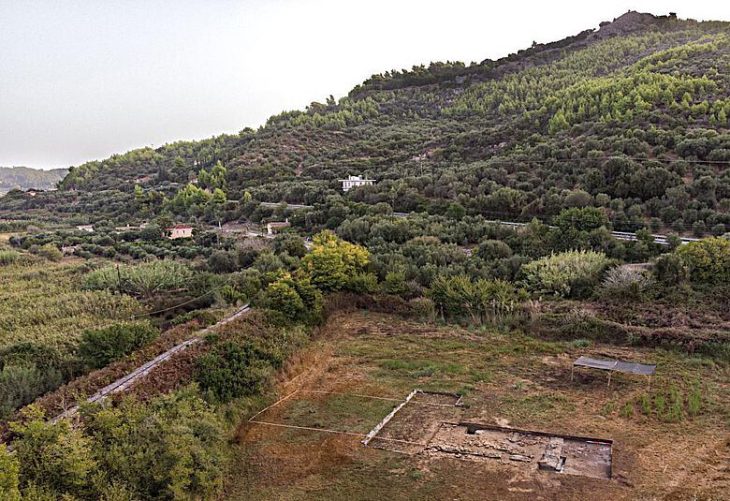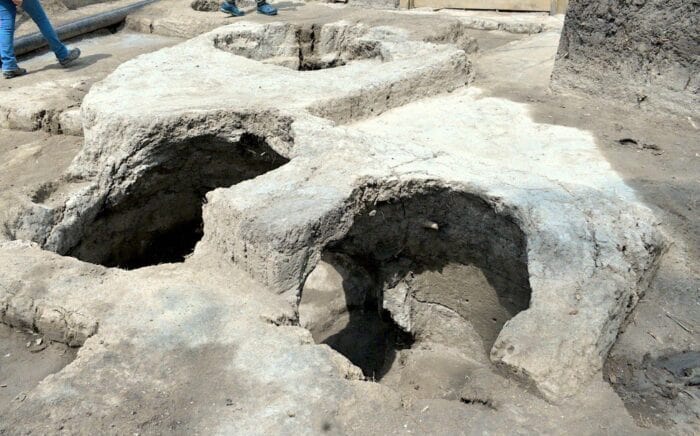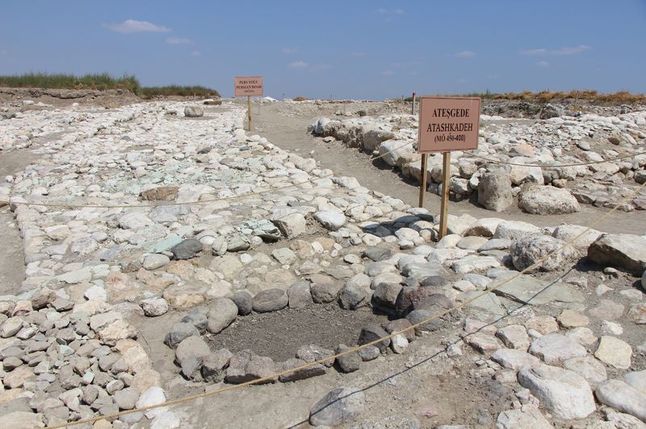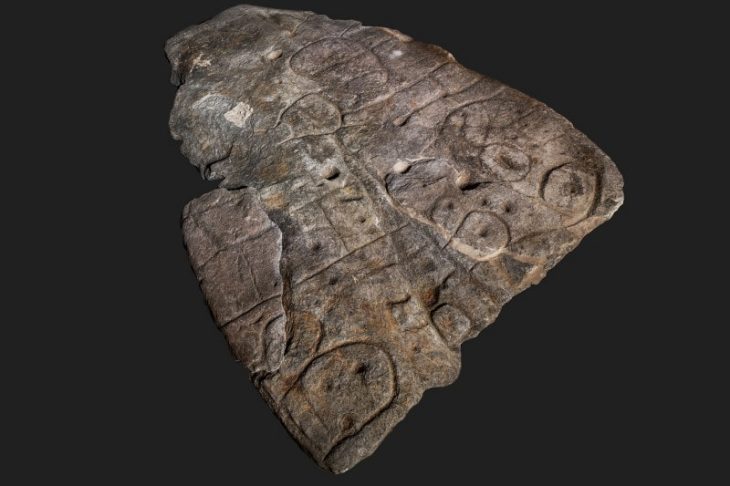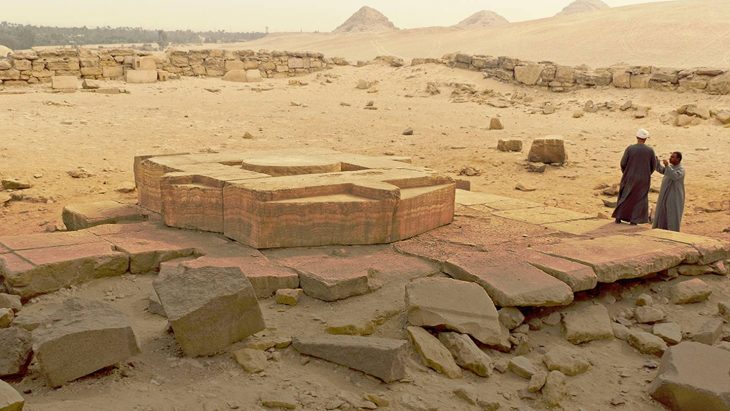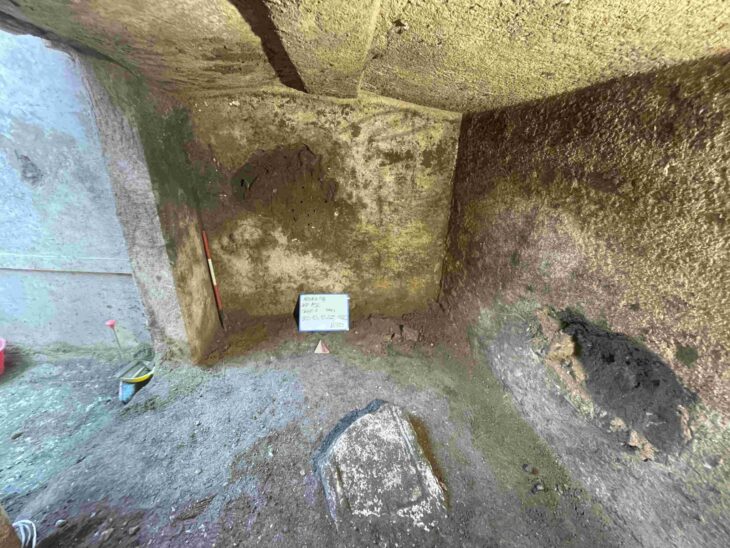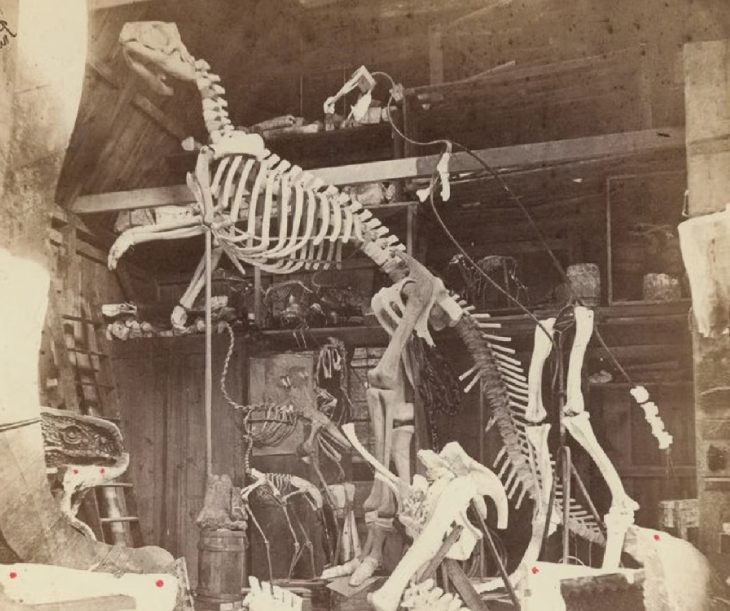Archaeologists have unearthed a relatively intact 1st-century Roman sanctuary in the town of Herwen-Hemeling in the province of Gelderland in the eastern Netherlands.
While Roman sanctuaries have been found before in the Netherlands, this is the first discovered on the Lower German Limes. (As it is known, the Lower Germanic Limes is the name given to the structures that marked the Roman Empire’s northern border.) The sanctuary of Elst, Nijmegen, Empel and Aardenburg are now well-known examples.
“The sanctuary in Herwen-Hemeling is special for several reasons. Never before has such a complete complex been found in the Netherlands with a temple building, votive stones, and pits with the remains of sacrifices. In addition, the amount of limestone sculpture fragments is unprecedented,” RAAP wrote.

Late last year, while conducting an archaeological investigation of a clay mining region, volunteers discovered the first remnants. They informed the Dutch Cultural Heritage Agency about the discovery, which halted clay mining and set up a qualified excavation. The first intact fibulae of various sorts were found during the excavation, which was followed by a deluge of other archaeological finds such as weapon pieces, harness fittings, roof tiles imprinted with the names of the makers, and votive altars both intact and in fragments.

Soldiers were the major visitors to the sanctuary. The fact that there are so many stamps on the roof tiles indicates that manufacturing them at the time was a military endeavor. At the location, several pieces of armor, horse harnesses, and spear and lance ends have also been discovered. Numerous votive stones were raised by high-ranking Roman commanders as a form of thanksgiving to a deity or goddess who had granted their requests. These weren’t always about conquering enemies. Surviving a visit to these northern locations, frequently distant from home, was often reason enough to be grateful.
📣 Our WhatsApp channel is now LIVE! Stay up-to-date with the latest news and updates, just click here to follow us on WhatsApp and never miss a thing!!
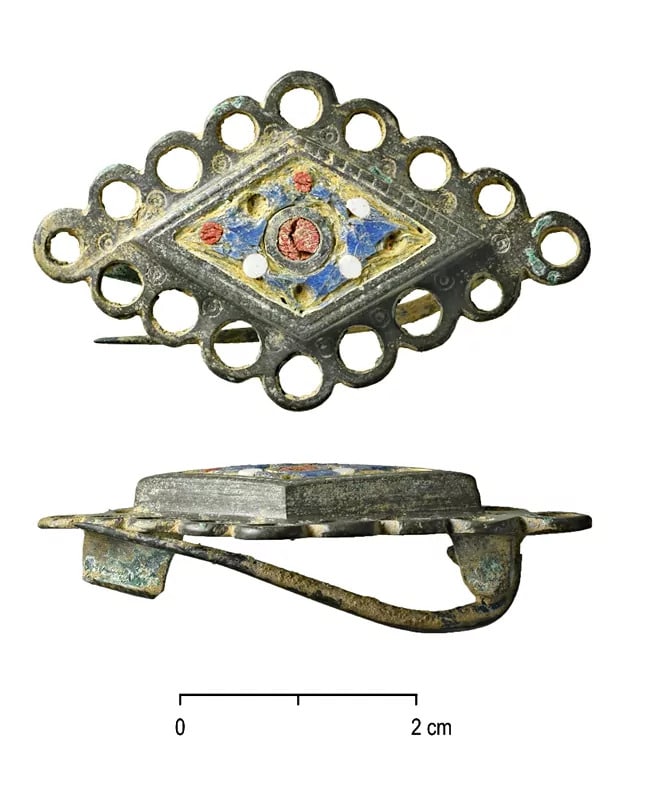
The soldiers prayed to their gods in Herwen-Hemeling, in the municipality of Zevenaar, from the 1st to 4th century.
At least two temples were constructed near the confluence of the Rijn and Waal rivers, where an elevated region already existed. The first was a Gallo-Roman community temple with brightly colored painted walls and a tiled roof. The walls of the other, smaller temple were likewise decorated. Archaeologists also discovered the remnants of many votive stones or tiny altars, which were put by warriors to honor their gods for victory or safe returns home. The stones were erected in honor of Hercules Magus, Jupiter-Serapis, and Mercury.

Architectural finds include a well with a large stone staircase leading down into the water. Archaeologists were able to date the well to an astonishingly narrow range of 220-230 A.D. thanks to coins and bits of the inscription found inside.
Various key pieces from the site will be displayed in Museum Het Valkhof in Nijmegen from June 24.

